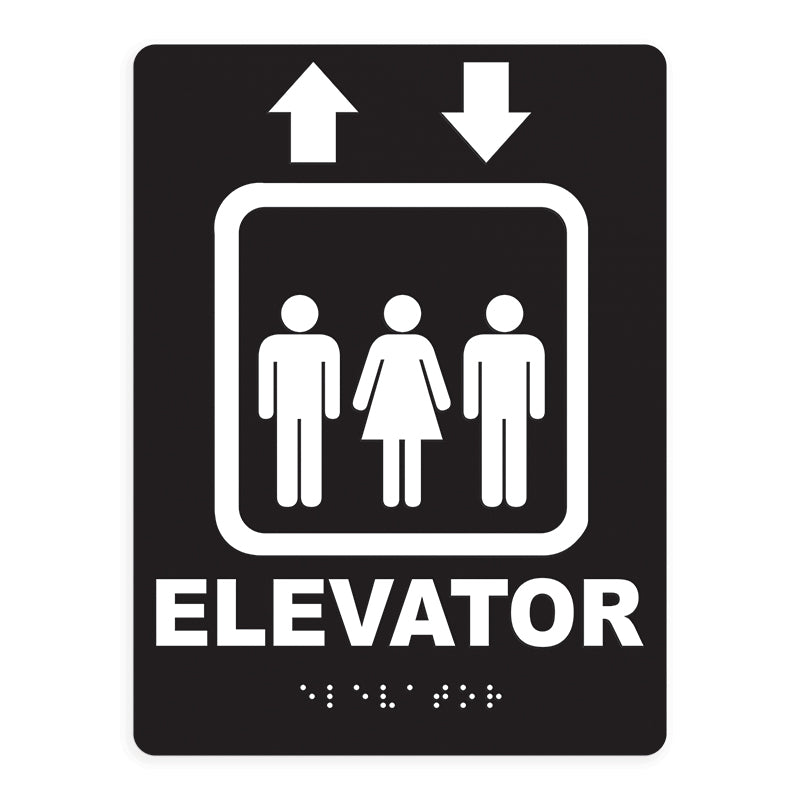Exploring Imaginative Designs for Reliable ADA Signs
Exploring Imaginative Designs for Reliable ADA Signs
Blog Article
ADA Signs: Guaranteeing Access and Compliance in Public Spaces
ADA signs plays a vital duty in assuring accessibility and compliance within public spaces, significantly contributing to a comprehensive atmosphere for people with specials needs. As we discover the subtleties of ADA signs, from responsive attributes to design intricacies, it's essential to think about exactly how these aspects coalesce to support the legal rights of all individuals.
Significance of ADA Signage
In modern society, the value of ADA signage expands past simple compliance with legal mandates to personify a dedication to inclusivity and access for all individuals. These indicators are essential in developing settings where individuals with impairments can navigate public spaces with the same convenience and freedom as those without specials needs. By offering standard and clear details, ADA signage guarantees that everyone can access centers, services, and information without obstacles.
The importance of ADA signs lies in its ability to boost the lifestyle for people with handicaps by promoting equal accessibility. It gets rid of the obstacles that may otherwise hinder their capability to participate fully in neighborhood life. In addition, these indicators serve as noticeable signs of a company's commitment to variety and equal rights, reflecting more comprehensive social worths that champion the rights and self-respect of all individuals.
Additionally, ADA signs plays a vital role in public safety. By leading individuals to departures, toilets, and other necessary centers, it makes sure that all individuals, no matter physical capability, can leave securely during emergencies. In summary, ADA signs is not just a regulative demand yet a powerful tool for promoting a equitable and comprehensive culture.
Key Elements of Compliance

Placement is crucial; indications should be installed in locations that are obtainable and quickly visible. Generally, signs ought to be installed in between 48 and 60 inches from the ground to make certain accessibility for both standing and mobility device users. Tactile components, such as Braille, are necessary for people with aesthetic problems, supplying essential information in a non-visual layout.
High-contrast shades in between the message and history are essential to improve readability for people with low vision. The ADA mandates specific contrast ratios to guarantee quality. Furthermore, personality dimension is an essential consideration, with minimum height needs dictated by the viewing range to guarantee readability from numerous angles.
Style Factors To Consider for Availability
Designing available signs calls for a meticulous method to guarantee it fulfills the needs of all individuals, especially those with impairments. The size of the message is just as important, with ADA standards suggesting a minimal elevation based on watching distance to ensure readability.
Contrasting shades between text and history are important for presence, specifically for individuals with visual impairments. In addition, responsive components, such as Braille and increased personalities, are crucial for people who are blind or have low vision.
Furthermore, the positioning of signs plays a significant role in ease of access. Signs need to be mounted in places that are quickly reachable and unhampered. Guaranteeing that signage is placed at proper heights and angles allows all individuals, including those making use of wheelchairs, to interact with them properly.
Typical Blunders to Prevent

An additional prevalent mistake is the incorrect positioning of signage. ADA standards specify specific height and area demands to make certain that indications are easily noticeable and reachable by all people, including those making use of wheelchairs. Ignoring go now these guidelines not just hampers availability but likewise risks non-compliance with legal criteria.
Additionally, inadequate comparison between text and history is a constant oversight. Sufficient comparison is necessary for readability, particularly for people with reduced vision. Designers in some cases pick shades that are visually attractive however lack the needed comparison, rendering the text tough to recognize.
Lastly, some developers stop working to incorporate responsive elements, such as Braille, which are vital for individuals who are blind. Omitting these functions not only leads to non-compliance with ADA regulations yet also limits accessibility for a sector of the population that depends on responsive my review here details.
Future Trends in Signage
Improvements in innovation and enhancing recognition of inclusivity are shaping the future fads in signs style. As society ends up being more conscious of diverse demands, the integration of smart innovations right into signs is obtaining grip. Digital signs, as an example, is evolving to consist of interactive functions and real-time updates, which can be important in offering dynamic information in public spaces. These indicators usually include touch displays or gesture-based controls, making it possible for customers to browse content tailored to their specific needs.
Another arising pattern is the utilization of increased reality (AR) to boost user experience. AR-enabled signs can overlay digital info onto the physical atmosphere, offering aesthetically damaged people with auditory or haptic feedback. ADA Signs. This technology not just enhances ease of access yet also develops an engaging experience for all individuals
Sustainability is additionally a considerable variable influencing signs trends. Green materials and Recommended Site energy-efficient illumination remedies are being prioritized to line up with international ecological objectives. Advancements in materials science are leading to the advancement of even more durable and weather-resistant indications.
Final Thought
ADA signs plays a vital role in ensuring availability and conformity within public rooms by including responsive components, high-contrast colors, and calculated positioning. The adherence to ADA criteria not just promotes safe navigation for people with disabilities but likewise indicates a company's devotion to variety and inclusivity. By staying clear of usual blunders and welcoming future patterns, public rooms can continue to progress these worths, making certain that the civil liberties and self-respect of all people are appreciated and maintained.
ADA signage plays a vital function in ensuring ease of access and compliance within public spaces, significantly adding to a comprehensive atmosphere for people with handicaps. As we check out the nuances of ADA signage, from responsive functions to create complexities, it's essential to think about exactly how these elements integrate to maintain the rights of all users.In modern-day society, the significance of ADA signs prolongs beyond plain conformity with legal requireds to symbolize a commitment to inclusivity and access for all individuals. By providing clear and standard information, ADA signs guarantees that everyone can access centers, services, and details without obstacles.
ADA signage plays an essential function in assuring availability and compliance within public areas by incorporating responsive elements, high-contrast colors, and strategic placement. (ADA Signs)
Report this page